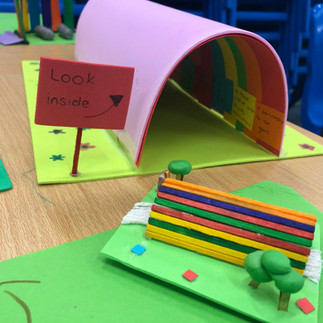Colaiste na Sceilge Transition Year Trail Update
- Admin
- Mar 1, 2023
- 3 min read
Updated: Apr 3, 2023

School notice board
It has been a busy year for some of the Transition Year learners at Coláiste na Sceilge. We have been working with a new group of TY learners to develop different nodes, or pause points, on their proposed 1KM Health and Well-being trail since September.
Incorporating Geography and Enterprise, learners have been using circular design thinking to develop different node ideas, some of which will be built by the end of the school year. From September to December, the groups had classes, which focused on ideation, creating good ideas from bad ideas, using SWOT analysis, and empathy profiles to begin to understand how to design products or services for different communities. These classes develop 21st Century skills and encourage learners to consider every aspect of the design process.
Site Map of the Wellness Trail at Coláiste na Sceilge
After some skill-building classes, the learners surveyed the Wellness Trail using the ROLE - OBREDIM model. Each group was tasked with looking at a number of different nodes to record their observations, information about the sites’ boundaries and resources which might be used when building the node.
Their observations and introduction to circular design thinking then led to the groups designing a specific node. To encourage problem-solving, the groups were given a specific node, an SDG to incorporate into the node, specific users to design the node for, and a challenge to overcome. These challenges included low to no budget, designing nodes which do not require planning permission, using only reused and recycled materials, etc.
From these ideas, the learners prototyped their nodes first by drawing a flat version of their node. After sharing and incorporating feedback from their peers, they then made a 3D prototype of their nodes using various materials made available to them. The prototyping sessions encouraged the learners to problem-solve and think about the feasibility, practicality and usefulness of their nodes. This stage of the process also gets learners to think about the types of materials they may use as well as the placement and other design choices.
Prototyping ideas
After Christmas break, the learners began to create vision boards for their nodes. This is part of the programme when the learners begin to move into Enterprise skills building. The Trail programme uses our Problem to Pitch, module, which leads the students through the whole process of addressing a problem and developing solutions, which they will eventually pitch to a selected external panel. From their prototypes, they began to research what materials, costs, and other resources they need to build their node. Their vision boards served as a way to conduct deeper research and begin to think granularly about the details of their nodes.
Developing Vision Boards
From the vision boards, the learners are now working on a Pecha Kucha presentation to talk about their nodes in front of the Kerry ETB, the School Board, and peers. A Pecha Kucha, a Japanese word for ‘chit-chat’, is a presentation style where learners must create 20 slides where they speak about each slide for 20 seconds (total 6-minute and 40-second presentations). These presentations will be workshopped in class before their big presentation where different stakeholders will hear their ideas and vote for one to two nodes to be built before the end of the school year. As the presentations are like a pitch for a new product or service, learners will need to focus on details such as materials, costings, where they can gain access to the resources they need (e.g. building materials, equipment, etc.), colourways, and layout / placement of the elements that make up their node.
We are excited to see what the learners present and are even more excited to begin building the nodes with them. By the end of the school year, the learners will have engaged in design thinking from ideation to implementation. Working in this way allows learners to develop and exercise accountability, autonomy/ownership and agency over their nodes. We hope that by summer break, you will be able to see and interact with this year’s Transition Year learners’ nodes!
The Future is Now.
It is time to prepare today's students for today’s world.
Please get in contact at hello@futurefocus21c.com if you are interested in using our resources with your learners.

































Comments